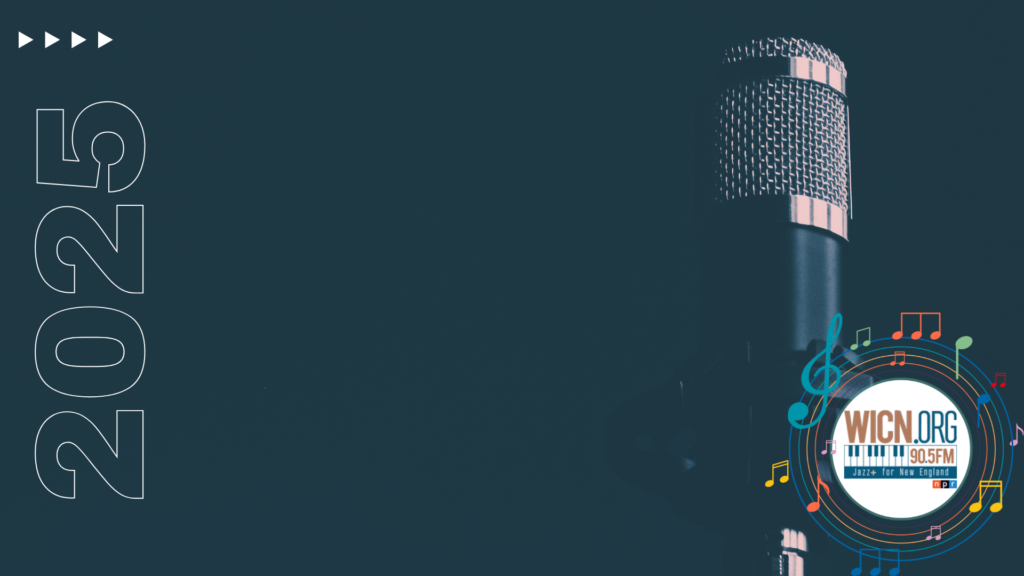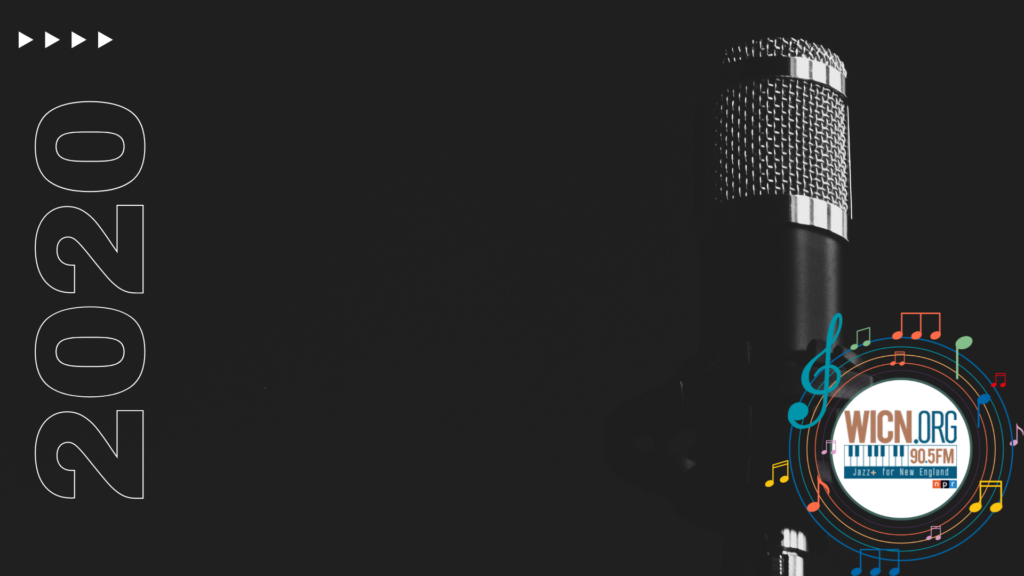Charlie “Bird” Parker: WICN Artist of the Month, August 2020
Written by Emily Morrow on August 3, 2020
It’s difficult to represent the importance of Charlie Parker on the development of Jazz in a brief overview. To give his musical impact the weight it deserves, we would have to review Parker’s music for a couple of hours every single day—alongside a balanced diet of 90 minutes of Duke Ellington, an hour of Louis Armstrong’s music, and a scoop of Billie Holiday. We might be closest to consuming the recommended daily allowance of John Coltrane, though even there, most of us are deficient. Only occasionally does a radio station pay full due to Parker. This month, WICN will try.
Charlie Parker was a musical innovator and a major stylist on the alto saxophone. He’s one of the few virtuosos in the history of the music to have captured the respect and admiration of his contemporaries, his elders, and an entire flock of younger players—including students of Jazz right now, for whom he continues to be an idol. Parker was as important as anyone else to the emergence and popularity of the new music of the 1940s that came to be called “Bebop.” The style surged suddenly into view, Parker became a star, the music flourished and changed, and when he died after a ten-year recording career, he became a martyr of the modern Jazz lifestyle, and an enduring legend in Jazz history.
Had he lived to this moment, Charlie Parker would see himself turn 100 years old on August 29. Celebrating his centennial all year long has given the whole Jazz community a chance to reflect on his impact. After 30 years of a festival in his name and innumerable tribute projects that are still emerging, we’ll spend special time this month making sure that we know the sound and the story that belonged to Parker himself, in addition to the larger-than-life legend.
Parker came from Kansas City KS, one of the later Jazz talents to benefit from the very fertile musical environment in that city. He was the kid who kicked around on the periphery of a Jazz scene whose adult practitioners like Ben Webster and Budd Johnson were visible, audible idols for a young player. Though they lived on small means, Parker’s mother extended herself to put a saxophone into her son’s hands as a youth. Charlie was eager to get himself together—too eager, in fact, and was rebuffed by older players who pointed out that he needed further work to be any good. And that’s where the story gets interesting. Charlie Parker put in that work, spending hours and hours of his teen years gathering skills on the saxophone. Then, as a finishing school of sorts, he played with small bands in the southwest, learning the basics of harmony and how to fit the lines he played into the song. Parker was inspired by records of tenor man Chu Berry and other swing-era stars; trained further in-person with the elder saxophonist Buster Smith; took important lessons in chordal motion from a guitarist in one of the bands he played with; and was further enthused by hearing Art Tatum on a trip to New York at the end of his teens.
Parker’s first real big-time work involved bands led by the pianist Jay McShann. Parker played alto saxophone in McShann’s medium-sized ensemble, and then the full big band that worked the southwest territory of Kansas and Oklahoma, and later toured farther afield. While traveling to a gig by car with this band, Parker acquired the nickname that stuck: we still refer to him as “Bird”—short for “Yardbird,” after a comment he made that maybe a road-kill chicken could be worth adding to the soup pot. Also, of lasting significance, Bird made his first appearances on record dates with McShann.
There are still a few senior members of the Jazz community around who could tell you about the experience of hearing Charlie Parker when he first broke through. Lou Donaldson is one; he was galvanized by the fluid and dazzling solo chorus that Parker plays one minute into McShann’s “The Jumping Blues:”
Trumpeter Howard McGhee heard a broadcast like this one and was so knocked out that he went straight to the venue where the broadcast was coming from, to find out who this man was.
A few months before Pearl Harbor, while Bird was still based in Kansas City, he made another pivotal impression, when he and trumpeter Dizzy Gillespie first intersected and found they were on a similar path of Jazz modernity. That path was a sort of abstraction, extending the possibilities of swing-era pop songs. Parker and Gillespie both were into hot-rodding the basic tunes that were dance hits, updating their harmony, rephrasing them rhythmically, and using these songs’ chord structures as the basis for long extrapolations—notes upon notes, embroidering the pieces in long solo improvisations. Well, actually the long solos belonged to jam-sessions after work, where they could stretch out at length; meanwhile, both Parker and Gillespie were still part of big bands for the next few years, so most of their exposure was in very brief glimpses in short solos on big band records.
Like Dizzy Gillespie, Bird moved around through many bands at the beginning of the war years. Though there’s no audible evidence of it, one critical point on this curve was the 1943 big band led by pianist Earl Hines, in which Parker and Gillespie were able to travel together as bandmates, and develop still further their new approach to Jazz. Ditto for the 1944 big band of Billy Eckstine, which pushed the envelope musically even farther in the direction of the sound of what was just about to be called “Bebop.”
The next year held the breakthrough for Bird and for Bebop: Gillespie put together a small band including Bird that played the new music on 52nd Street, at a club called the Three Deuces. This was the decisive step: new music that in its design celebrated what Bebop was all about, and what Bird was a genius at. Their five-piece band—trumpet, alto, piano, bass, and drums—played the new compositions of Gillespie and others, showcasing the new style at its optimum of crisp, exciting delivery. Something new was definitely afoot.
Parker played in Gillespie’s groups all year. They made their own record dates and guest-starred on others’; they were held over at the club, heard on radio broadcasts, in town and out of town, and eventually even took the music to California at year’s end. Bebop was getting serious attention as the latest breakthrough of Jazz extrapolation, and the fast-paced sound representing a post-war America. In the same year, Parker made his own first records as a leader, partly using Dizzy but also introducing the musical voice of Miles Davis as Bird’s trumpet man of choice. What should logically have been a steady broadening of his own fame and access had a more circuitous path.
Bird was by this time subject to the appetites that would shape his career. As perceptive and inventive as he was, Parker still couldn’t help himself from the psychological demons driving his addiction. He was hooked on drugs, couldn’t get free, and by the time of the late-1945 residency in California also couldn’t get the chemicals his body needed. Bird said it best:
“I don’t know how I made it through those years. I became bitter, hard, cold/ I was always on a panic–couldn’t buy clothes or a good place to live. Finally, on the coast, I didn’t have any place to stay, until somebody put me up in a converted garage. The mental strain was getting worse all the time. What made it worst of all was that nobody understood our kind of music on the coast. I can’t begin to tell you how I yearned for New York. Finally, I broke down.”
Parker’s rock-bottom was spectacular. He was hospitalized for much of 1946 in California, trying to stabilize and clean up…which he did, and returned to Jazz activity at the top of 1947.
The next three years and more have a sort of “golden era” character: Bird’s re-emergence was a triumph. He sounded better than ever, and his quintet was constantly working—in demand in the clubs of New York and across the nation, broadcasting and recording regularly. In just a few short years Bebop had gone from a radical fringe music to the very top of Jazz renown, and it had a strong stake as one voice of youth culture. Bird even on a bad day had extraordinary resources as an improviser, taking us with every solo on a thrilling rollercoaster ride of variations.
By 1949, Parker’s fame was enormous, and he was beginning to morph already into ‘legendary’ status. He headlined at the world’s second Jazz festival, at Nice, France in 1949. The New York club Birdland opened, honoring Bird even in its name. In a new record contract, Bird was even able to indulge his fancy to record with a string ensemble.
Almost all of Charlie Parker’s professional years are full of giant-sized professional accomplishments, matched by the drama and wreckage of personal relationships. We continue to marvel at the creativity and balance of his saxophone playing, in spite of his tumultuous life circumstances. Bird’s musical career in the Fifties was equally disparate. After the Parker-with-Strings combination—which was a touring ensemble for several months—he didn’t really lead a band consistently, but would travel as a “single,” joining up with local rhythm sections. Such was the breadth of Bebop’s reach that players all across the country were familiar with the literature and able to adapt. Special studio projects featured his talents was a guest attraction along with Latin Jazz orchestras, a studio big band, vocal ensembles, and his old friend Dizzy Gillespie. Bird’s sound was also mated for longer or shorter durations with other bebop veterans, and the big bands of Stan Kenton and Woody Herman.
Charlie Parker lived only a short distance into the 1950s era of long-playing records. With only a few exceptions, his music was crafted to be brief and brilliant on 78rpm singles. His last years saw the those beginning to be recirculated into new formats, beginning early the perpetual celebration of those morsels from a rapidly-changing music.
The study and adulation of Bird had begun long before his death at age 34, but at that point started the motto that became graffiti around New York: “Bird Lives.”
It’s as true now as it was in 1955.

